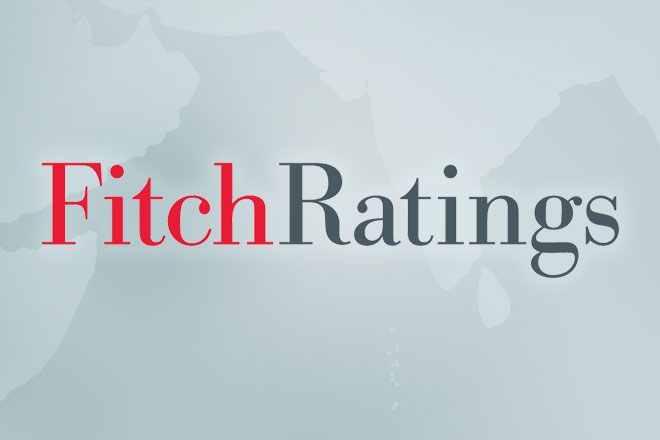Fitch Ratings has maintained Sri Lanka Telecom PLC's (SLT) 'A(lka)' National Long-Term Rating on Rating Watch Positive (RWP).
The RWP reflects the potential rating upside from the removal of linkages with SLT's parent, the Sri Lankan government (Long-Term Local-Currency Issuer Default Rating (IDR): CCC-), as the government is in the process of selling its 50.
2% stake in the company.
We believe that SLT's rating will no longer be dragged by the state ownership following the sale. Fitch will resolve the RWP when the proposed disposal becomes practically unconditional, which may take longer than six months, based on the government's 2Q24 target date for the definitive agreements.
SLT's ratings are currently constrained by its parent's weak credit profile under Fitch's Parent and Subsidiary Linkage (PSL) Rating Criteria. SLT's Standalone Credit Profile (SCP) is stronger than that of the state, reflecting the company's market leadership in fixed telephone and broadband services, second-largest share in mobile, ownership of an extensive optical fibre network and a stronger financial profile.
The extent of rating upside following the proposed disposal will depend on the credit profile of the new parent, the strength of linkages according to our PSL criteria, and the proposed funding structure.
KEY RATING DRIVERS
Disposal Plan on Track: Progress on the government stake disposal continues, with the International Finance Corporation appointed as transaction advisor.
The timeline released by the government's State-Owned Enterprise (SOE) Restructuring Unit targets the signing of definitive agreements with the successful bidder by end-2Q24.
We believe the government will follow through with the disposal, as SOE restructuring is an integral part of the International Monetary Fund's financial support programme for Sri Lanka.
Constrained by Sovereign Rating: SLT's 'A(lka)' rating reflects its relative credit strength compared with national peers, but is below its SCP due to the drag from state ownership.
Fitch applies our PSL criteria because our Government-Related Entities
(GRE) Rating Criteria states that in cases where the SCP of the GRE is higher than the government's IDR, the relevant considerations of the PSL criteria will be applied to determine whether the IDR of the GRE is constrained or capped at the government's rating level.
We assess the legal ring-fencing and access and control between SLT and the state as 'Open' under the PSL criteria, given the absence of regulatory or self-imposed ring- fencing of SLT's cash flow and the government's significant influence over the subsidiary's operating and financial profile.
The second-biggest shareholder with a 45% stake, Malaysia-based Usaha Tegas Sdn Bhd, has no special provisions in its shareholder agreement to dilute the government's influence over SLT.
Profitability Recovery: We forecast the Fitch-defined EBITDA margin to recover to 31% in 2024, driven by measures to control operating costs, especially utility and maintenance costs.
In addition, the growth in fibre broadband subscribers will contribute
to margin improvement starting from 2024. We forecast that the EBITDA margin will recover to 33%-34% by 2025, the level before the sovereign default crisis.
The 2023 EBITDA margin likely declined to around 27% (2022: 34%) due to higher cost inflation and the sharp depreciation of the Sri Lankan rupee.
Leverage to Improve: SLT's EBITDA net leverage is likely to improve to 1.6x by 2025, from our estimate of 2.5x in 2023, supported by EBITDA margin recovery, and a lower capex investment plan over the next two years.
Leverage will weaken temporarily in 2023, from 1.4x in 2022, amid a falling EBITDA margin and negative free cash flow (FCF).
SLT's leverage metrics will remain strong compared with similarly-rated national
peers despite the temporary weakness.
Lower Capex Intensity: We expect capex/revenue to decline to 20% in 2024 as SLT has completed fibre deployment and will rationalise its capex by prioritising critical projects.
The company is likely to remain cautious on capex until the economy and consumer purchasing power recover significantly. The elevated capex during 2022-2023 was driven by the fibre network investment and rupee depreciation. Capex intensity is likely to remain high at 34% in 2023 (2022: 43%).
Lower Dividends: We expect SLT to remain cautious on shareholder returns before the company achieves a more substantial recovery in pre-tax profit, which we expect to happen in 2025. SLT is likely to distribute limited dividends in 2024, as we expect it to generate a pre-tax loss for 2023 due to declining profitability and high interest expense.
Interest Cost to Decline: We expect EBITDA interest coverage to recover to 3.0x in 2024 and improve further to 4.3x in 2025-2026, from an estimated 2.1x in 2023. We believe the average cost of borrowing will decline gradually to around 12%-13% by 2025- 2026, from around 17% in 2023 (2022: 12%), due to moderating inflation and easing policy interest rates.
Cash interest expenses for 2023 are likely to remain substantially
higher at around LKR14 billion (2022: LKR8 billion) due to high debt amid temporarily weak cash flow, and the high interest rate that prevailed during most of 2023.
Sector Outlook Improving: Fitch expects the aggregate 2024 EBITDA net leverage for SLT and mobile leader Dialog Axiata PLC (AAA(lka)/Stable) to improve to 1.4x by 2024, from 1.9x in 2023, supported by margin recovery and cautious capex.
The average EBITDA margin should improve to above 30% in 2024, from 28% in 2023, due to cost reductions, moderating inflation and a relatively steady exchange rate. The sector's revenue growth is also likely to recover as SLT starts fibre monetisation. Competition is likely to moderate with the potential merger of Dialog Axiata and Bharti Airtel Lanka.

